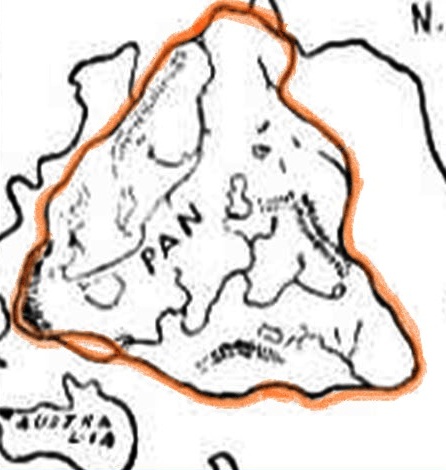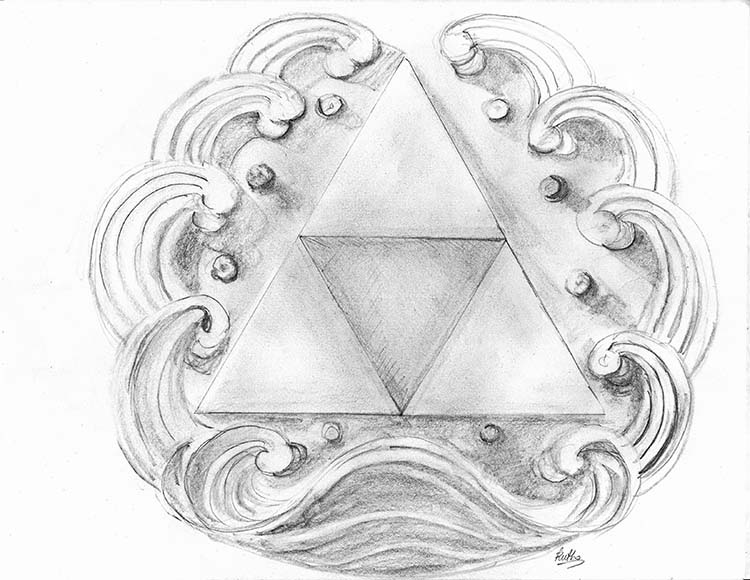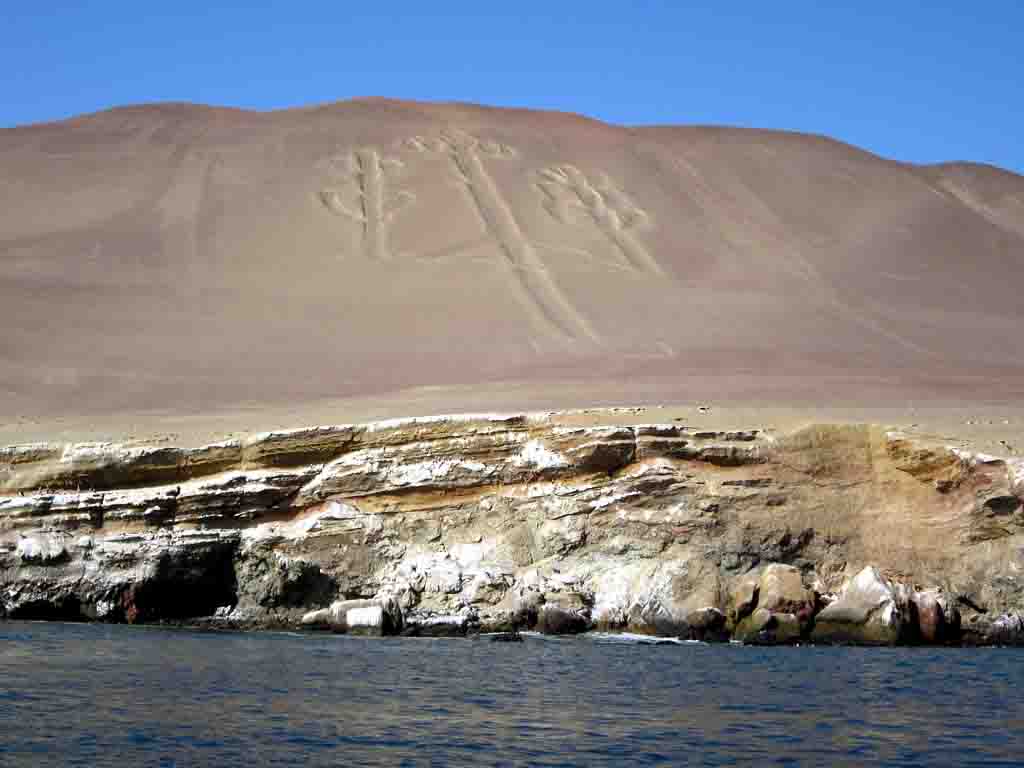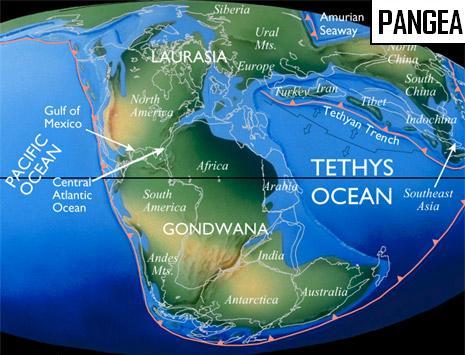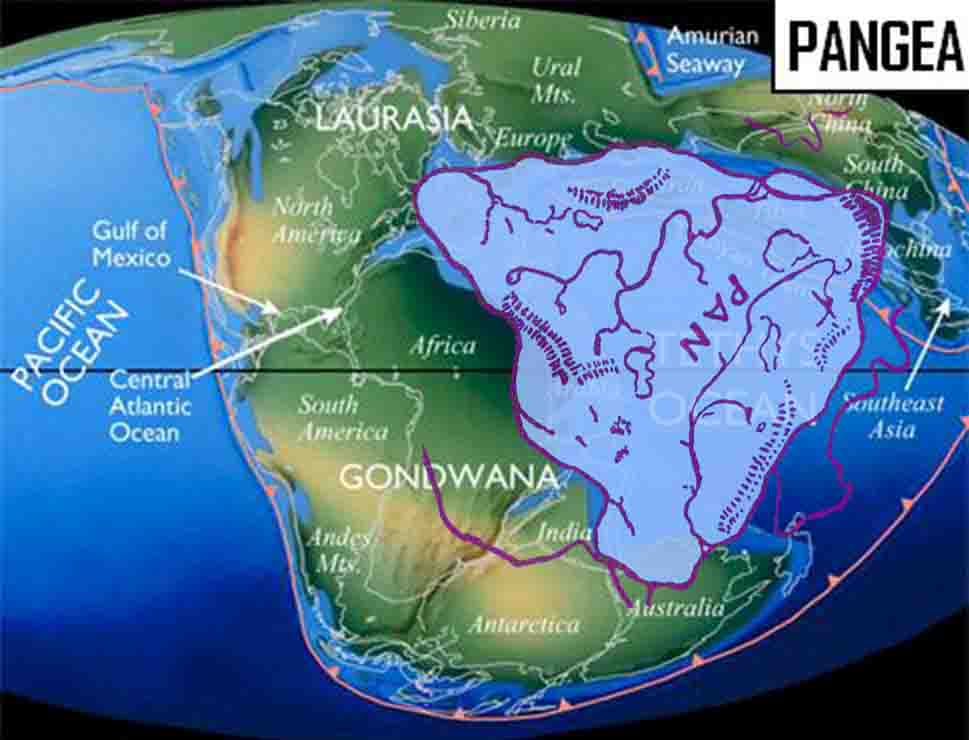Oahspe Study
Pan the Missing Triangle of Pangea
|
|
|
|
|
|
The outline of Pan from the Post-Flood Map of the World in Oahspe shows a distinct triangle shape |
A sketch of an emblem in the Benten-Do Temple which is located on a small island in the Shinobazu Pond in Ueno Park, Tokyo. |
The Benten-Do Temple is dedicated to the Buddhist/Shinto Goddess, Benzaiten whose temples are often found on islands. Apparently, an island is represented in this emblem of the "three triangles making a larger triangle" ("three dragon scales") by the surround of water. Note that the Triangular shape is made up of three smaller triangles with a triangular space in the middle. The composition thus forms four smaller triangles within the larger form of one triangle, and the whole is surrounded by engulfing tsunami waves. This symbol of the three contiguous triangles is most probably very ancient, surviving through the ages by appropriation, as have many ancient and sacred symbols that are found among the world's religions and cultures. Also called the "dragon scales" this three in one triangle emblem represents the scales of a dragon, attributed to an island god who was believed to take the form of a dragon. Since newer cultures and religions have typically absorbed symbols and holy sites of older cults, it is most likely that the "triforce/dragon scales" emblem and significance of the island locations already existed long before the first known historical references to it were recorded.
Could this ancient emblem's origin go back many thousands of years to the Great Sunken Continent of the Pacific Ocean - Pan? It would be in accord with the shape of the great sunken continent. The pre-flood map of the world in Oahspe shows the shape of the ancient sunken land of Pan to be a definite triangle with its points to the North, East and West. The same map shows that Japan was a part of the original great Pacific continent. Is it any wonder that Japan contains the name of its mother land? Oahspe reveals that Zha-pan in the ancient Panic language means: Remnant of Pan and Nippon translates to North Pan.
According to Oahspe, the triangle as one of the original emblems of the Gods of this planet. Is it any wonder then that this symbol was jealously appropriated by various religions and deities of more recent histories?
Oahspe Book of Aph: 10/16.15.
Then God took off the triangle, the sam'gan, the heirloom of the Gods of the red star, the earth, and God hung it from Wak'hah's neck, saying: Take this heirloom, the symbol of three entities in one, and wear it for the glory of the Great Spirit, Jehovih.
The symbol and meanings for the three contiguous triangles have also been appropriated in the modern video games made in Japan - two of the triangles symbolize Wisdom and Power. The symbol of three lights (light can also represent virtues such as Love, Wisdom and Power) was also preserved among descendents of the survivors of the sunken continent. Japan is among the five locations where the fleets of survivors landed:
|
Oahspe Book of Aph: 11/1.69. - 11/1.73. They shall have three great lights: Or, the All Highest; God, son of Or; and Lord (Adonya), executor of heaven and earth. They shall have three lesser lights: God's angels and Lords; the prophets; and the rab'bahs. They shall have three representative symbols of light: The sun, the moon and the burning flame. The Lord said: And my chosen shall use these lights and symbols, signs and seasons, in all the divisions of the earth where I have settled them. And in the Kosmon era I will come and show them the framework of my building, which I raise up to the Almighty.
|
|
|
Candelabra of Peracas in Peru (Photo “Candelabra” by Momo; Flickr; CC license) |
The giant glyph representing a tri-branch candelabra shape found on a sea-side sandstone cliff in Peru symbolizes the three lights carried by the survivors of the submerged continent of Pan. Middle America was one of the five landing locations for the fleets of survivors.
Aside from the triangular shape of an island surrounded by inundating waves found in ancient symbols, the triangular shape of Pan is also found in our modern scientific lore that theorizes the first land mass of earth --- Pangea.
|
|
The mother of the "Super-Continents" named Pangaea/Pangea is a theorized ancient land mass based on "Continental Drift" Theory. Pangea was hypothesized by scientists who theorized "Continental Drift" and later "Plate Tectonics" to explain the hand/glove shape similarities between different continents as well as their pockets of identical species and geology. An interesting feature of Pangea is a large triangular gap between the super continents of "Laurasia" and "Gandwanaland" named the Tethys Ocean as shown in map of Pangea.
|
|
|
The Missing Triangle of Pangaea has been identified as an anomaly which cannot be explained by "Continental Drift", "Plate Tectonics" or any other existing scientific theory. It can however be accounted for in the historical revelations of Oahspe regarding the ancient continent of Pan, which was submerged and lies at the bottom of the Pacific Ocean.The map of Pan, from Oahspe has the same triangular shape as the missing piece called the Tethys Ocean in the hypothesized map of Pangaea. (The name Pangea was coined in 1927 following Alfred Wegener's theory of Continental Drift published in 1915. Oahspe was published first in 1882.)
|
Shape of Pan as Evidence
Some evidence of Pan's existence has been examined in "Oahspe Confirmed" (1999) by M H Jones. Jones indicates that researchers such as Lyn Rose and others believe the Triangular shaped Tethys Ocean is an anomaly. Rose hypothesizes that the formation of an original land mass should take the form of a circular egg shape, yet the map of Pangea is more like a pie with a large triangular wedge missing. "The Anomaly of Pangaea". Jones also connects the triangular shape of Pan with observations made by Ian Cameron's "Lost Paradise" (page 21) "About 80 percent of all the islands in the world lie within a triangle [in the predicted area of Pan] whose apexes are Tokyo, Jakarta and Pitcairn."
Thus, the submerged landmass of Pan lies as a silhouette in plain sight, like Rubin's vase/face, visible to those to see who can see.
All Oahspe references are from the Standard Edition Oahspe of 2007
· GO TO NEXT
ARTICLE:
Search for a Lost Continent.
